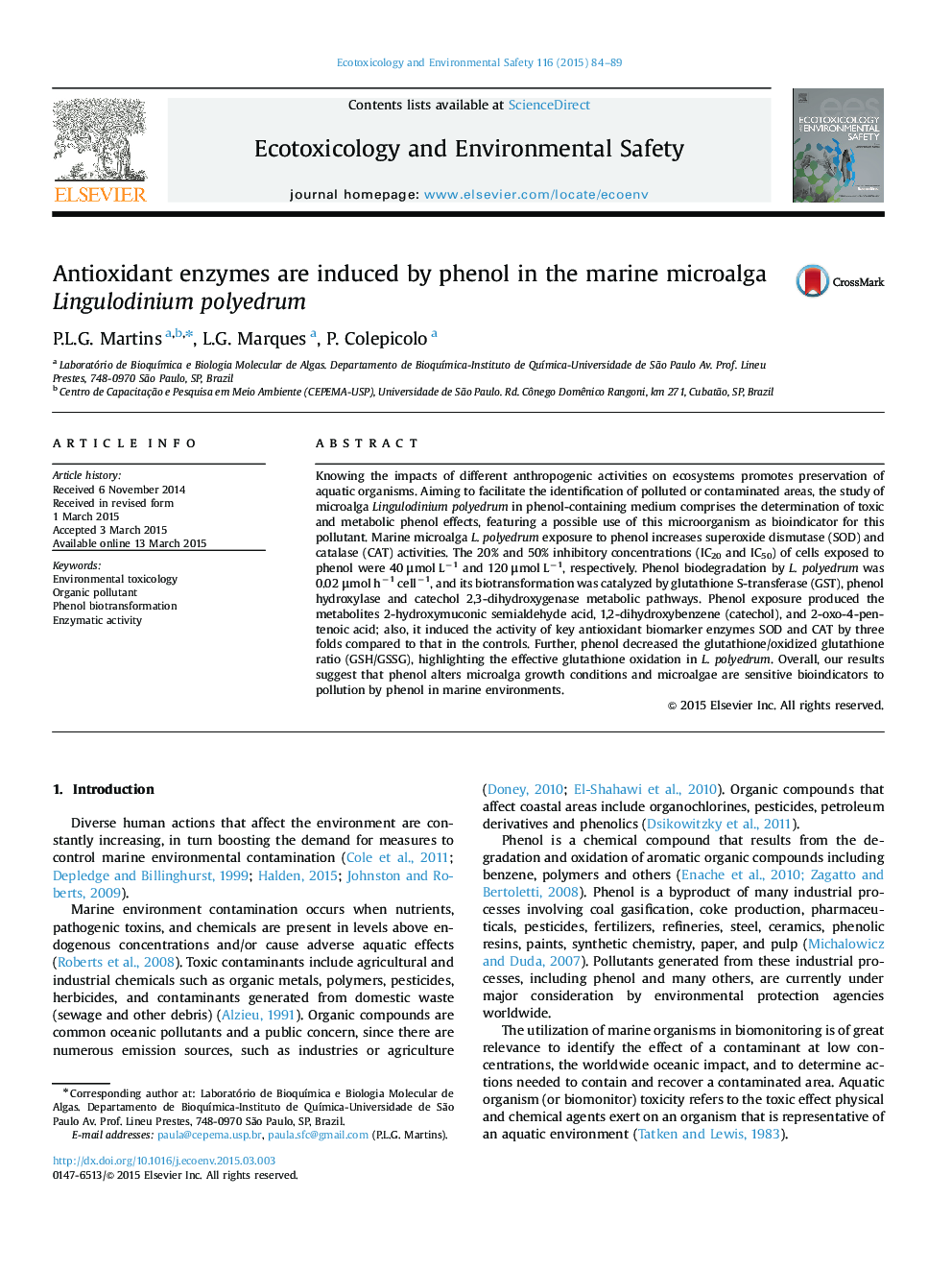| Article ID | Journal | Published Year | Pages | File Type |
|---|---|---|---|---|
| 4419641 | Ecotoxicology and Environmental Safety | 2015 | 6 Pages |
•Phenol is biodegraded by L. polyedrum (marine microalga) for phenol hydroxylase and catechol 2,3-dioxygenase.•Biotransformation also occurs by conjugation phenol with glutathione catalyzed by GST.•Levels of 120 µmol L−1 phenol interfere in the activity of antioxidants enzymes, serving as monitoring contaminated areas.
Knowing the impacts of different anthropogenic activities on ecosystems promotes preservation of aquatic organisms. Aiming to facilitate the identification of polluted or contaminated areas, the study of microalga Lingulodinium polyedrum in phenol-containing medium comprises the determination of toxic and metabolic phenol effects, featuring a possible use of this microorganism as bioindicator for this pollutant. Marine microalga L. polyedrum exposure to phenol increases superoxide dismutase (SOD) and catalase (CAT) activities. The 20% and 50% inhibitory concentrations (IC20 and IC50) of cells exposed to phenol were 40 μmol L−1 and 120 μmol L−1, respectively. Phenol biodegradation by L. polyedrum was 0.02 μmol h−1 cell−1, and its biotransformation was catalyzed by glutathione S-transferase (GST), phenol hydroxylase and catechol 2,3-dihydroxygenase metabolic pathways. Phenol exposure produced the metabolites 2-hydroxymuconic semialdehyde acid, 1,2-dihydroxybenzene (catechol), and 2-oxo-4-pentenoic acid; also, it induced the activity of key antioxidant biomarker enzymes SOD and CAT by three folds compared to that in the controls. Further, phenol decreased the glutathione/oxidized glutathione ratio (GSH/GSSG), highlighting the effective glutathione oxidation in L. polyedrum. Overall, our results suggest that phenol alters microalga growth conditions and microalgae are sensitive bioindicators to pollution by phenol in marine environments.
